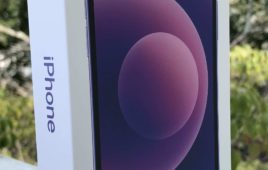LAS VEGAS—Qualcomm is making considerable headway with its new Gobi multi-mode chipset for laptops, with the top five laptop manufacturers licensing the technology and four large carriers certifying it for use on their networks.
Qualcomm last fall started shipping the Gobi chipset, which includes software that allows the laptop to connect to either a CDMA EV-DO or W-CDMA/HSPA network, essentially giving it ubiquitous coverage anywhere in the world.
At a press conference at CTIA Wireless 2008 Tuesday, Sanjay Jha, head of Qualcomm’s CDMA Technologies unit, said the laptop manufacturers will start shipping machines this year using Gobi. Jha also said Gobi has been certified on the networks of T-Mobile International and Verizon Wireless, and would soon be certified for Vodafone and Telefonica.
Jha also said Qualcomm’s Snapdragon chipset for “pocketable computers” is expected to be in commercial devices by the end of this year or early 2009. Snapdragon has 1 GHz processing power with integrated graphics, multimedia capability and wireless wide area network connectivity. It’s expected to be a competitor to Intel’s Silverthorne chipset, which is going into Mobile Internet Devices. Jha said Snapdragon has an advantage in its power management capabilities.
There are about 15 devices in development now using Snapdragon, Jha said.
Qualcomm CEO Paul Jacobs told the press conference that Qualcomm expects its chips to be in more consumer devices that traditionally have not been connected. These includes things like personal navigation devices and body sensors used for health or medical reasons.
The press conference also focused on a new relationship Qualcomm, through its Firethorn acquisition, has for banking services with Citi Cards. Len Lauer, Qualcomm’s executive vice president, said mobile banking is just the start of what the company wants to enable. He mentioned mobile coupons, loyalty cards and proximity payments.
Lauer said Verizon Wireless, AT&T and Sprint all have agreed to enable mobile banking through Firethorn’s technology. Banks using the technology include Wachovia, SunTrust Bank, Regions Financial, BancorpSouth and Synovus.
Firethorn recently cut a deal with Citi Cards to enable credit card holders to gain access to their account information on a phone, which is expected to be available in the third quarter.
Raja Rajamannar, executive vice president of Citi Cards, said at the conference the company is doing pilot tests for peer-to-peer payments over the phone, including across borders.
Gina Lombardi, president of MediaFLO USA, said Qualcomm had wanted to have wider coverage of its mobile broadcast service but that it has taken longer than expected. She said the company continues to add 5-to-6 markets each quarter and just recently launched its 58th market, which happens to be Qualcomm’s home city of San Diego.
“It takes a long time to build a nationwide network,” Lombardi said, adding that when analog TV channels are turned off next February that there will be more spectrum available. “We still have a long way to go to have the coverage we want,” she said.




